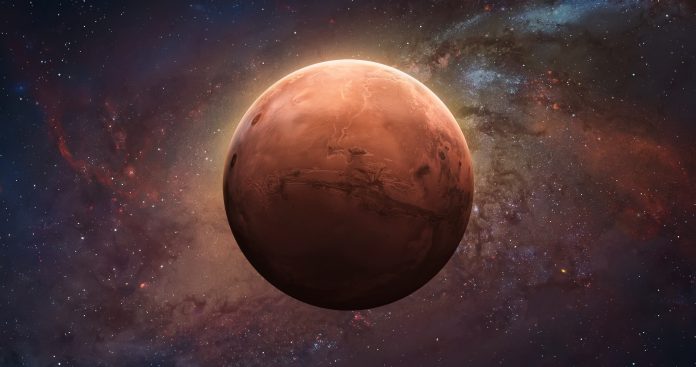Scientists found that the largest Mars seismic event was caused by tectonic forces, not a meteorite impact
A collaborative effort between scientists worldwide has unveiled findings concerning the origin of the most substantial seismic event ever detected on Mars. The research, led by the University of Oxford, dismisses the idea of a meteorite impact and proposes that the seismic disturbance was generated by immense tectonic pressures acting within the Martian crust.
Mars’ largest seismic event
With a magnitude of 4.7, the seismic event sent ripples coursing through Mars for a minimum of six hours, and NASA’s InSight lander initially registered it on May 4, 2022. Given that the seismic signal bore similarities to previous quakes associated to meteoroid impacts, the research team named this occurrence ‘S1222a’ and initiated a global quest to locate a potential impact crater.
Ruling out meteorite impact
Despite Mars being smaller than Earth, it has a comparable land surface area due to the absence of oceans. To thoroughly investigate this expansive terrain covering 144 million square kilometres, Dr. Benjamin Fernando, leading the study from the University of Oxford, enlisted the cooperation of the European Space Agency, the Chinese National Space Agency, the Indian Space Research Organisation, and the United Arab Emirates Space Agency.
This marked a groundbreaking collaboration, as it is believed to be the first instance where all Mars-orbiting missions joined forces on a single project. Each one analysed data from their respective Mars-orbiting satellites to identify any new craters or distinctive indicators of an impact, such as the appearance of a dust cloud in the hours following the seismic event.
Following an extensive search spanning several months, the research team has officially revealed that they have failed to discover any evidence of a newly formed crater. They conclude that the seismic event was not the outcome of an impact but rather the consequence of significant tectonic forces being unleashed within Mars’ inner layers.
InSight mission’s critical role
Dr Fernando said:
‘We still think that Mars doesn’t have any active plate tectonics today, so this event was likely caused by the release of stress within Mars’ crust.
‘This project represents a huge international effort to help solve the mystery of S1222a, and I am incredibly grateful to all the missions who contributed. I hope this project is a template for productive international collaborations in deep space.”
‘S1222a’ marked one of the final occurrences documented by InSight before the declaration of its mission’s conclusion in December 2022. The research team is advancing by using insights from this investigation in future endeavours.
About InSight
InSight, a NASA mission launched from California in May 2018 and landed on Mars in November of the same year, was dedicated to exploring the Martian interior through geophysics, particularly seismology (the study of earthquakes). Unfortunately, it transmitted its last data in December 2022 as it lost power due to accumulating dust on its solar panels.











